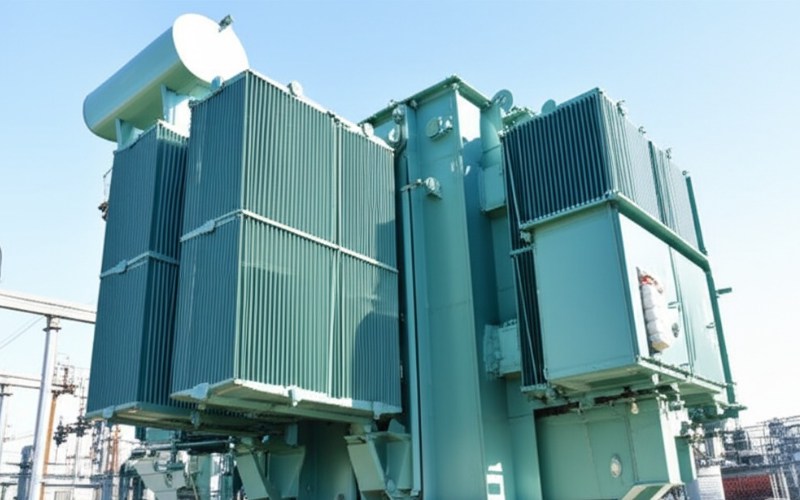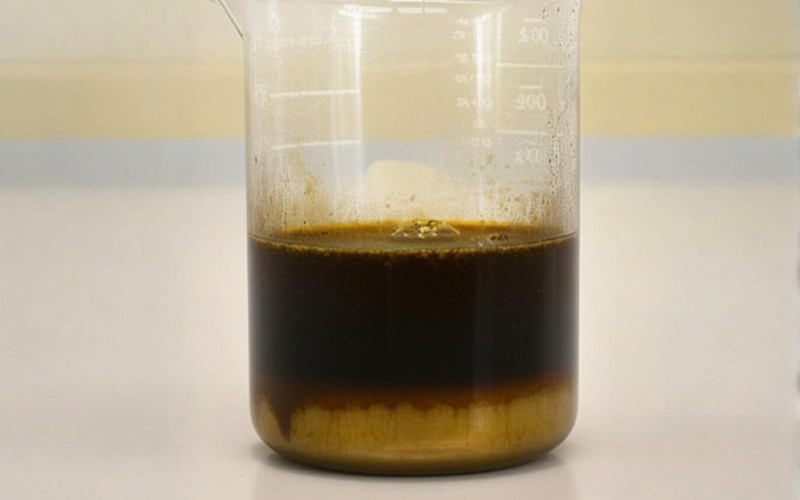Let Sino's Lamination Stacks Empower Your Project!
To speed up your project, you can label Lamination Stacks with details such as tolerance, material, surface finish, whether or not oxidized insulation is required, quantity, and more.

You see, this unique transformer oil resembles the lifeline of your power transformer. It does not simply cools things down; it likewise supplies vital insulation. But below’s the catch– this transformer insulating oil doesn’t stay ideal permanently. It experiences an aging process, similar to anything else. Understanding this aging of transformer oil is incredibly essential. Why? Since it can save you large trouble and money in the future. If the oil spoils, it can harm the insulation paper and also the whole transformer. This article is your guide to the maturing attributes of power transformer insulating oil. We’ll take a look at how to do an assessment of transformer health by examining its oil. I have actually seen what occurs when this insulation degrades, and I intend to assist you maintain your transformer running well for a long, very long time. We’ll even touch on things like acid formation and what that implies for your electrical equipment.
You could just think about oil as something for cars, but in a power transformer, it’s a super star. Usually, this is a highly fine-tuned mineral oil, sometimes called insulating oil. Its major task is to protect the different parts inside the transformer that have high voltage. This indicates it stops electrical power from jumping where it should not. Think of cables lugging great deals of power; this oil maintains them safely apart. The oil plays a crucial role in the safe operation of transformers.
This liquid insulation likewise does an additional really crucial task: it cools down the transformer. As the transformer functions, it fumes. The transformer oil circulates, picking up heat from the areas, like the winding, and bringing it away. This assists the transformer stay at an excellent running temperature. So, this oil is a two-in-one hero: it assists to protect and it cools. The properties of the oil are really important for the transformer to work right. A big transformer can hold lots of countless gallons of this special transformer oil. The insulation in transformers counts greatly on this oil.
It’s a wonderful question! And indeed, in a manner, transformer oil growing older is a little bit like us. With time, it changes. This is the aging process. A number of things make the transformer oil age. The huge 3 are warmth, oxygen, and moisture. Each time your transformer is running, it develops heat. This thermal stress is just one of the main reasons the oil starts to break down or degrade. The oil is exposed to oxygen from the air, specifically in some types of transformer styles.
When oxygen and high temperatures mix with the transformer oil, a chemical reaction called oxidation takes place. Think about an apple turning brown when you cut it– that’s oxidation! This oxidation changes the oil, making it less able to do its job well. Moisture, also small amounts of water content, can additionally get involved in the transformer and increase this oil aging. So, the age of the oil is a large consideration for the health of your transformer. This degradation is a slow-moving procedure, however it happens to every transformer over its lifespan. The objective is to understand this aging of transformer oil to safeguard the transformer.

As we said, oxidation is a major villain. When the oil is subjected to oxygen and heat, it starts to break down. This oil degradation produces hazardous byproducts. Among the nastiest of these byproducts is acid. Yes, the oil becomes acidic! This development of acids misbehaves information for everything inside the transformer. This acid content is a crucial point we determine to check oil quality.
An additional adversary is contamination. This can be moisture, as we discussed, or tiny metal particles from wear inside the transformer. These impurities can accelerate the degradation process of the transformer oil. High temperatures, or thermal stress, from the transformer being overloaded or working in a hot location, likewise quicken exactly how quickly the oil will age and degrade. Electrical stress, like from faults or lightning, can also add. All these factors interact to reduce the insulating properties of the oil. The oil because of this becomes less efficient.
This is where points get actually serious for your transformer. Most transformers do not just make use of oil for insulation; they likewise utilize special paper, frequently constructed from cellulose, twisted around the cords in the winding. This is called paper insulation or insulation paper. This oil-paper insulation system is very common. Now, remember that acid we discussed, which forms when the transformer oil ages? That acid is horrible for the cellulose insulation paper.
The acid attacks the cellulose fibers, making the paper insulation weak and fragile. It’s a little bit like just how old newspapers turn yellow and break down. This degradation of the cellulose damages the primary electric insulation of the transformer. The transformer insulation can end up being so weak that it can’t withstand normal electric or mechanical stresses any longer. The terrifying part is that once the cellulose paper is damaged, you can’t actually fix it without a major, expensive repair service of the transformer. This straight impact on transformer life is why we keep an eye on oil so closely.
You bet it can! I’ve seen it occur. Old, deteriorated transformer oil isn’t simply a minor concern; it’s a serious risk to the entire power transformer. As the oil ages and breaks down, it develops not just acid however additionally something called sludge. This sludge is a sticky, dark material that can obstruct cooling ducts inside the transformer. When cooling is obstructed, the transformer gets even hotter, which makes the oil age also quicker! It’s a horrible cycle. This brings about increased aging of the transformer itself.
Worse, as the oil loses its capability to protect (its dielectric strength decreases), the threat of an electrical fault inside the transformer rises. This might be a small arc, or maybe a significant internal explosion, bringing about a complete failure of the transformer. A failed power transformer indicates power blackouts, pricey repair work, or even requiring a whole brand-new transformer. The impact on transformer reliability and your operations can be big. This is why the condition of the transformer oil is essential for the performance of transformers made use of in power distribution.
Recognizing what to try to find is key. One of the very first indications of transformer oil beginning to age and weaken is a boost in its acidity. We can test for this. An additional sign is a change in color. New transformer oil is normally clear and light yellow. As it ages, it can turn darker, even brownish or black. This is usually an indicator of oxidation and sludge formation. You may also discover that the oil doesn’t cool the transformer too, causing higher oil temperature readings.
Often, the deterioration of transformer oil and cellulose insulation produces certain types of gas. These gases dissolve in the oil. We can evaluate these dissolved gas kinds and amounts. This is a very powerful tool called Dissolved Gas Analysis (or DGA). Different gases can tell us if there’s overheating, arcing, or problems with the insulation paper in the transformer. A low dielectric strength is likewise a clear indicator the oil is refraining its task to shield properly. This deterioration of the oil is a warning sign for the transformer.
To actually understand what’s occurring with the transformer oil and its age, we take an oil sample from the transformer tank. After that, this oil sample is most likely for a lab for a lot of tests. One typical examination determines the acidity (or acid content) of the oil. Higher acidity implies more deterioration. We additionally examine the dielectric strength, which tells us how well the oil can protect against high voltage. A low dielectric strength is a red flag for the transformer insulation.
We also gauge the water content in the oil, since water quicken oil aging and damages cellulose insulation. And, Dissolved Gas Analysis (DGA) is a big one. By looking at the types and quantities of gas in the oil, we can obtain ideas regarding troubles like overheating in the winding or the degradation of paper insulation. These examinations aid us evaluate the total oil quality and the health of the transformer. This condition analysis is important for any transformer. This becomes part of great electric design practice.

Yes, thankfully there are things we can do! It’s everything about trying to reduce the aging process. Among the very best things is to maintain the transformer oil clean, cool, and dry. This indicates making certain the transformer seals are good to keep moisture out. If the transformer has a conservator system with a breather, ensuring the desiccant (the drying things) in the breather is energetic is necessary. This helps in reduce the water content in the oil. Maintaining the transformer from being overloaded frequently can likewise assist manage thermal stress and extend its life.
Regular testing of the transformer oil is crucial. If tests show that the oil is beginning to weaken but isn’t also much gone, sometimes we can do something called oil regeneration or reclamation. This procedure cleanses the oil, gets rid of acid and sludge, and can restore its dielectric properties. This is frequently more affordable than replacing all the oil in a big power transformer. Excellent maintenance can truly extend the service life of both the oil and the transformer itself. The objective is to handle the aging rate of the oil and protect the insulation system of the transformer.
This is a huge choice point for any transformer owner. Generally, we look at the results from the transformer oil tests. If the acidity gets too expensive, or the dielectric strength goes down as well, or if there’s a lot of sludge forming, after that it’s time to act. Occasionally, if the degradation is not also extreme, oil regeneration is a great alternative. This process can clean the existing oil while it’s still in the transformer or by taking it out, treating it, and putting it back. This can considerably enhance the properties of the oil and extend the life of the transformer.
Nevertheless, if the oil is very old and severely weakened, or if the insulation paper (the cellulose) is currently drastically harmed, then oil regeneration might not suffice. In these instances, complete oil replacement could be required. Changing the oil gives the transformer a clean slate with new, clean insulating oil. However remember, new oil in a transformer with currently damaged paper insulation won’t take care of the paper. That’s why catching oil degradation early is so crucial for the transformer. We intend to prevent constant oil replacements if excellent maintenance and regeneration can do the job.
Cellulose and paper insulation are incredibly vital for your transformer. This cellulose insulation, typically in the type of paper or pressboard, is the primary strong insulation for the windings of the transformer. It creates the needed dielectric insulation barriers that stop shorts in between turns of the winding and in between the winding and other transformer parts. The health of this cellulosic insulation virtually decides the useful lifespan of the transformer.
When the transformer oil ages and produces acid and moisture, this cellulose insulation starts to deteriorate. The long chains that comprise the cellulose break down, making the insulation paper mechanically weak. It can become fragile and conveniently damaged by vibrations or the strong forces that take place during a short circuit. As soon as the cellulose degradation reaches a certain point, the transformer is at high risk of failure. You can alter the oil, but you can’t quickly alter out all the insulation paper deep inside a huge power transformer. That’s why securing the cellulose by maintaining the transformer oil healthy is absolutely vital for transformer aging management. The oil-paper mix is crucial to the transformer insulation system.